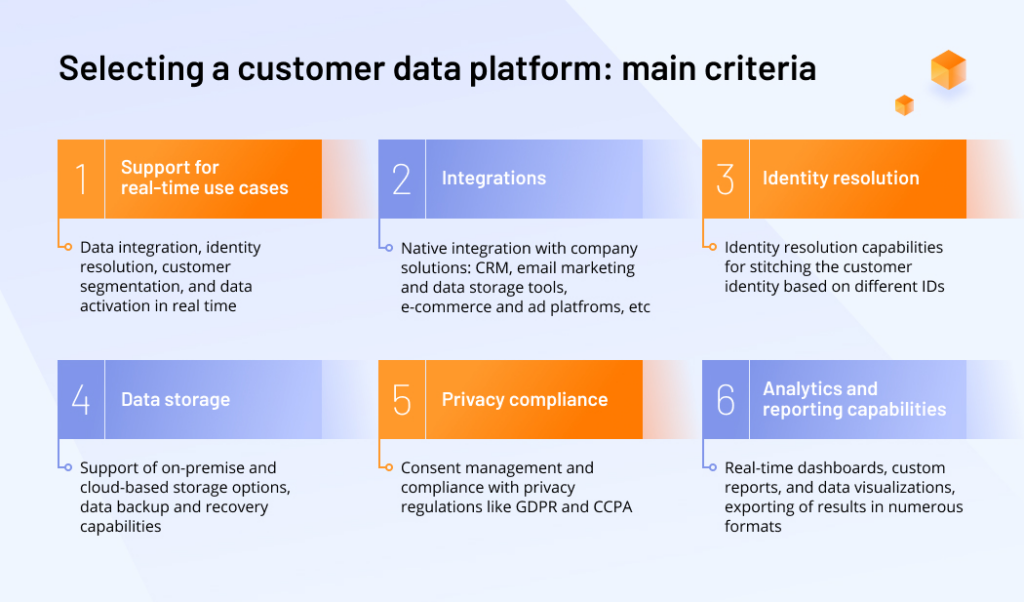by Maria Novikova, CMO, Xenoss
Attracting customers’ attention – and retaining those customers – is a stiff challenge for marketers due to several factors. For one thing, the way consumers shop and engage with brands has changed. As McKinsey has pointed out, shoppers are becoming more connected, less loyal, more informed, and channel-agnostic. Willing and able to choose among a myriad of similar offers and promoted items or lured by delivery perks and deals, consumers can easily switch brands.
Moreover, customers are tending to be thrifty in 2023 amid economic uncertainty and inflation. According to a global consumer survey by Salesforce, 79% of shoppers said they would reconsider spending with retailers.
To remain on customers’ radars, brands must communicate the right message through the proper channels at the right moments in their journey, showing respect for their time and knowledge of their needs. Shoppers, in turn, expect personalised interactions.
To gain insights into customer needs and preferences, brands must be able to obtain and analyse many data points to get a 360-degree customer view. It sounds simple, but not all businesses are prepared, data-wise, to power personalised experiences.
What can stand in the way of providing tailored experiences?
- Unclear picture of a customer: people use various devices and interact with a brand across digital and offline channels throughout their purchase journeys, making it challenging for marketers to understand which online devices and offline behaviours belong to any one consumer and who that consumer is.
- Data silos: marketers may not have access to data from other units (sales, customer support) to understand how and when a person interacted with a brand to provide a connected customer experience. Consequently, they don’t have all the data to build a customer profile.
But it is possible to overcome these issues by investing in the right technology – such as a customer data platform.
What is a customer data platform, and how does it work?
A customer data platform (CDP) pulls information from multiple sources to build a unified customer view and makes data available for other systems. CDPs allow marketers to restore the history of customer interaction with a company, from a first touchpoint to conversion and post-conversion engagement, enabling omni-channel attribution.
Customer data platforms typically collect and manage first-party PII (personally identifiable information) sourced from the organisation’s owned digital properties and systems with users’ consent. That makes first-party data the most valuable kind for learning about сustomer experience, and the safest regarding privacy compliance, as it’s possible to trace where and why it was gathered.
CDPs work with customer data in four stages.
- Data integration: pulling data from multiple sources, transforming and loading it into a single repository
- Cross-device and channel identity resolution: determining which identifiers obtained across devices, channels, and touchpoints (e.g. email, phone number, IP, physical address, cookie, digital tag) represent the same person.
- Audience segment creation: building customer segments based on similar behaviour patterns, characteristics and preferences.
- Data activation: making customer information available in real-time for other systems (e.g., email marketing and content management systems, DSPs, creative management platforms, CRMs) to enable personalisation.
Adopting a customer data platform
A multitude of ready-to-use solutions are available on the market, from suppliers including Bloomreach, Klaviyo, Segment, Listrak, Blueshift, Zeotap and Optimove
Selecting a data customer platform is not an easy task, so we have prepared the main criteria to help you choose the one.

Main capabilities to look at when evaluating customer data platforms | Xenoss
Likewise, businesses for which ready-to-use platforms are too limited can consider building their own customer data platform.
Below we’ll overview possible reasons for going custom.
Integration. CDP platforms usually don’t provide all the integrations a big enterprise needs, and on-demand integrations can take significant time to complete.
Optimisation of ETL workflows. Since out-of-the-box platforms may not support complex data transformations, businesses can optimise data integration and transformation by writing custom ETL (extract, transform, load) scripts.
Custom AI and ML features. Organisations may need advanced AI/ML capabilities for the next-best-action recommendations, forecasting customer lifetime value, churn, the likelihood of conversions or specific events, or sentiment analysis for building segments based on satisfaction levels and product preferences.
Finally, there is a data ownership concern. Some companies prefer not to share their data with third parties, and a custom-built CDP allows them to do so.
To sum up
A customer data platform serves as a centralised and reliable source of information on customers and potential clients. It offers valuable insights that can help brands create personalised experiences and, more importantly, equips them with the tools to deliver these experiences at scale across channels.
Businesses can choose among dozens of solutions of varying complexity. If shelved platforms don’t meet their requirements, brands can develop a platform in-house or rely on tech partners’ expertise.












